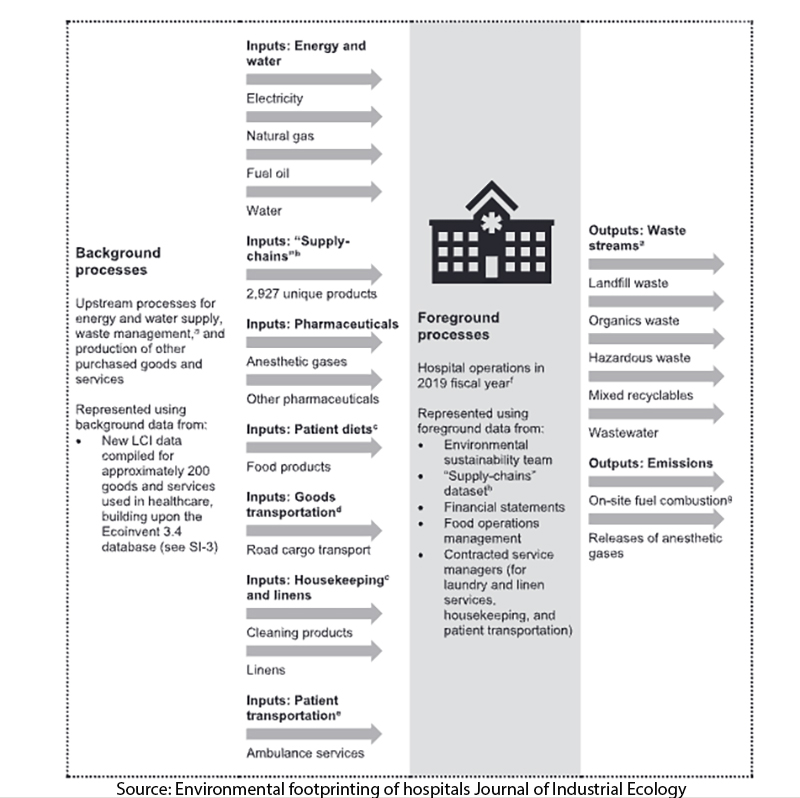The research published in the Journal of Industrial Ecology begins by noting that healthcare contributes 5-10% of the US environmental footprint. They used an environmental assessment that considered what they termed foreground costs, the local inputs and outputs of the system, and background costs, the upstream costs associated with the supplies they use. Here is the picture to replace the thousand words.

The data was based on a 40-bed hospital in Canada, so for our purposes, this is more qualitative than quantitative. That said, some interesting findings guide hospital executives looking to “green” their institutions.
- Energy and water accounted for 50% of a system’s environmental impact. The researchers noted that their energy source was low-carbon, so hospitals that rely on fossil fuel directly or, in general, on electricity will have a more significant footprint from just keeping the building hot and cool.
- Transportation of materials and patients accounted for just 2% of the hospital’s environmental impact
- Waste streams <1%
- Anesthetic gases, the frequent research focus, contributed about 10% of “global warming potential” as measured by tons of CO2 equivalents.
- Laundry contributed a surprising 14% of CO2 equivalents primarily through water use. This hospital had on-site laundry, whereas many of our health systems outsource those services and, in a sense, “offload” that component of their footprint.
- Those supply chain products, primarily disposables, are fractionated across nearly 3,000 separate products but account for roughly 30% of the hospital's footprint. Interestingly, the big volume item responsible for the most significant cost among the 3,000 products – the tiny cups the nurse hands the patient containing their medications. Over 3 million are used over the course of a year in a small, by US standards, hospital. This is in distinction to many big-ticket disposables used less frequently but whose costs make them targets for reuse. This would include the remanufacture of trocars and other disposables used in laparoscopic surgery.
- Patient meals were also identified as a reducible footprint. But that depends on the diets being offered as well as the costs of food
Much of the research and writing on the ways and means of greening healthcare have focused on anesthetic gases and disposals. Their impact is significant but pales before energy and water needs. Because they are part of the built environment, those impacts are much more challenging to control—likewise, the environmental impact of the health systems’ supply chain.
Perhaps our larger healthcare systems, which already are invested in buyer’s groups, could require those 200+ supply chain sources to reduce their environmental footprint. Apple, among others, has touted its more stringent requirements on its suppliers, though there is no data on how successful that leverage has been.
Source: Environmental footprinting of hospitals Journal of Industrial Ecology DOI: 10.1111/jiec13425




